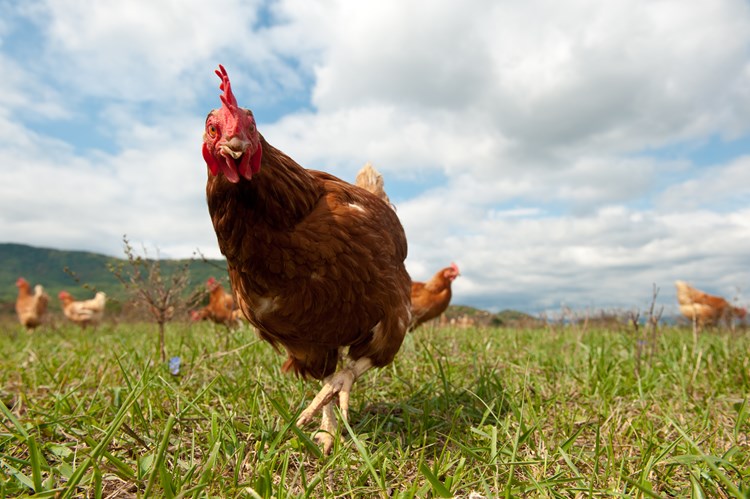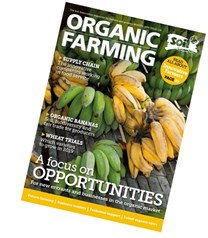Threats from new livestock diseases
As trade flows ever freely across the globe and livestock numbers continue to rise, farmers need to be ever vigilant to the threat of new disease
In 2018, a number of diseases thought to be problems much further afield were identified in Western Europe. Highlighted here are some of the diseases that farmers need to be aware of and what to look for.
POULTRY
Newcastle Disease
In July 2018 the Animal and Plant Health Agency (APHA) advised the risk to UK flocks from Newcastle Disease had risen from ‘low’ to ‘medium’ after cases of the disease were identified in Belgium, Netherlands and Luxembourg. Newcastle Disease and Avian Influenza are the only notifiable diseases for poultry, with similar control measures relating to biosecurity and movement restrictions. The disease is caused by a virulent strain of paramyxovirus and can be spread through direct contact with the bodily fluids of infected birds.
Symptoms include:
- Respiratory distress, such as gaping beak, coughing, sneezing, gurgling and rattling
- Nervous behaviour, such as tremors, paralysis and twisting of the neck
- Unusually watery faeces that are yellowish-green in colour
- Depression and a lack of appetite
- Fewer eggs produced which could be misshapen and soft-shelled.
Precautions to minimise disease risk with your flocks:
- Vaccination
- Implement strict biosecurity and hygiene measures on your premises, including using disinfectant foot baths and reducing visitors to the birds, thoroughly cleaning vehicles, equipment, clothing, boots that have been in contact with birds and strict hand-washing after handling birds
- Ideally feeding and watering should be under cover and kept away from wild birds.

Avian Influenza
At the time of writing the Avian Influenza prevention zone was not in place but that may not currently be the case. The last two years have seen identified UK cases and restrictions implemented, which is likely to continue in the future. There are two types of Avian Influenza. Highly Pathogenic Avian Influenza (HPAI) is the more serious type and it is often fatal in birds.
The main clinical signs of HPAI in birds are:
- Swollen head
- Blue discoloration of neck and throat
- Loss of appetite
- Respiratory distress such as gaping beak, coughing, sneezing, gurgling, rattling
- Diarrhoea
- Fewer eggs laid
- Increased mortality
Clinical signs can vary between species of bird and some species, such as ducks and geese, may show minimal clinical signs. Low Pathogenic Avian Influenza (LPAI) is usually less serious. It can cause mild breathing problems, but affected birds will not always show clear signs of infection. The severity of LPAI depends on the type of bird and whether it has any other illnesses. Precautions to minimise disease risk with your flocks are similar as with Newcastle Disease.
Defra has produced a valuable publication--Biosecurity and preventing welfare impacts in poultry and captive birds--about the biosecurity measures you should take to reduce the risks of flocks catching diseases such as Avian Influenza and Newcastle Disease.
PIGS
African Swine Fever
During 2018, African Swine Fever has spread across Eastern Europe. In August, Lithuania, Romania and Poland had the most reported cases, which were in domestic pigs. In September 2018 the disease was identified in wild boar in Belgium. APHA raised the risk to UK herds from ‘low’ to ‘medium’. The disease is caused by a highly contagious virus that is spread by pigs eating infectious meat or meat products, contact with infected pigs or their faeces or body fluids, contact with anything contaminated with the virus including people and their clothing, vehicles and other equipment.
It is worth noting that the movement of the disease to Belgium is not thought to be via live animals, as there was no proximity to wild boar with the disease in Belgium. It is most likely that infection was transferred by humans carrying the infection on clothes and footwear or via infected meat products, highlighting the role of humans in the spread of this disease.
The signs of African Swine Fever are very similar to Classical Swine Fever, namely:
- Fever
- Loss of appetite
- Lack of energy
- Sudden death with few symptoms beforehand.
There are multiple other signs that can include: vomiting, diarrhoea, red or dark skin, particularly on the ears and snout, discharges from the eyes and nose, laboured breathing and coughing, abortions, weakness, unsteady gait. There are several different strains of African Swine Fever. Pigs infected with mild strains may not become ill or show typical clinical signs. Severe strains of the disease are generally fatal.
Precautions to minimise disease risk with your herd:
- Implement strict biosecurity and hygiene measures on your premises
- You should never feed catering waste, kitchen scraps or meat products to pigs. You can be prosecuted if you do.

Sheep, goats and cattle
Bluetongue
There continues to be an equal risk of two separate types of Bluetongue (BTV-4 and BTV-8) spreading into the UK if infected midges are carried by the wind to the South and South East of England. The whole of mainland France has now been declared a Restriction Zone for both these types of the Bluetongue virus. In December three consignments of cows imported to the UK from France were identified with Bluetongue through routine post-import testing. As they were successfully intercepted the UK remains officially Bluetongue-free, with the risk of the disease remaining low and exports are not affected.
The exact level of risk continues to depend on the level of disease in nearby areas of Europe, as well as on the weather (especially temperature and wind direction) as the Bluetongue virus is carried by midges. The disease spreads when infected midges bite an animal affected by the disease. The midge season is normally March to September. If you plan to bring animals into the UK from France (or bring them back from visiting a show there) they must first be vaccinated against both types (BTV-8 and BTV-4). You should discuss this with your vet before you consider importing animals from Europe into an unvaccinated herd.
In sheep the main signs of Bluetongue are:
- Ulcers in the mouth
- Discharge of mucus and drooling from mouth and nose
- Swelling of the mouth, head and neck and the coronary band (where the skin of the leg meets the horn of the foot).
Other clinical signs include: red skin as a result of blood collecting beneath the surface, fever, lameness and breathing problems.
Cattle are the main carriers of Bluetongue. Infected cattle generally do not show any signs of the disease, but occasionally signs can include:
- Swelling and ulcers in the mouth
- Nasal discharge
- Red skin and eyes as a result of blood collecting beneath the surface
- Swollen teats
Other animals rarely show signs of the disease.
Precautions to minimise disease risk with your herd/flocks:
- Vaccination
- Implement strict biosecurity and hygiene measures on your premises
- Be vigilant if importing animals from outside the UK that they are free of the disease.
Steps to keep aware
To keep up to date with the latest news on exotic notifiable animal disease sign up to the APHA Alerts Subscription Service. The Defra website is kept up to date with the latest situation concerning new disease threats. But most importantly, always practise strict and vigilant biosecurity measures on your farm and know the health status of all the animals coming onto your farm or joining your flocks or herds.
Kate Still is Farming Advisor (Health and Welfare) at the Soil Association. Contact her at kstill@soilassociation.org
This article was first published in the Soil Association Organic Farming magazine Winter 2019 Issue 129.
Subscribe to Organic Farming today and keep up to date and informed!
 3 issues for £20. Every issue features the latest technical research and thought-provoking commentary on all aspects of organic farming, including:
3 issues for £20. Every issue features the latest technical research and thought-provoking commentary on all aspects of organic farming, including:
- News and policy issues
- Market information and prices
- Future farming and case studies
- Comprehensive advertising
Find out more about our paper and digital subscription options. Alternatively, call 0117 914 2447 or email
memb@soilassociation.org

